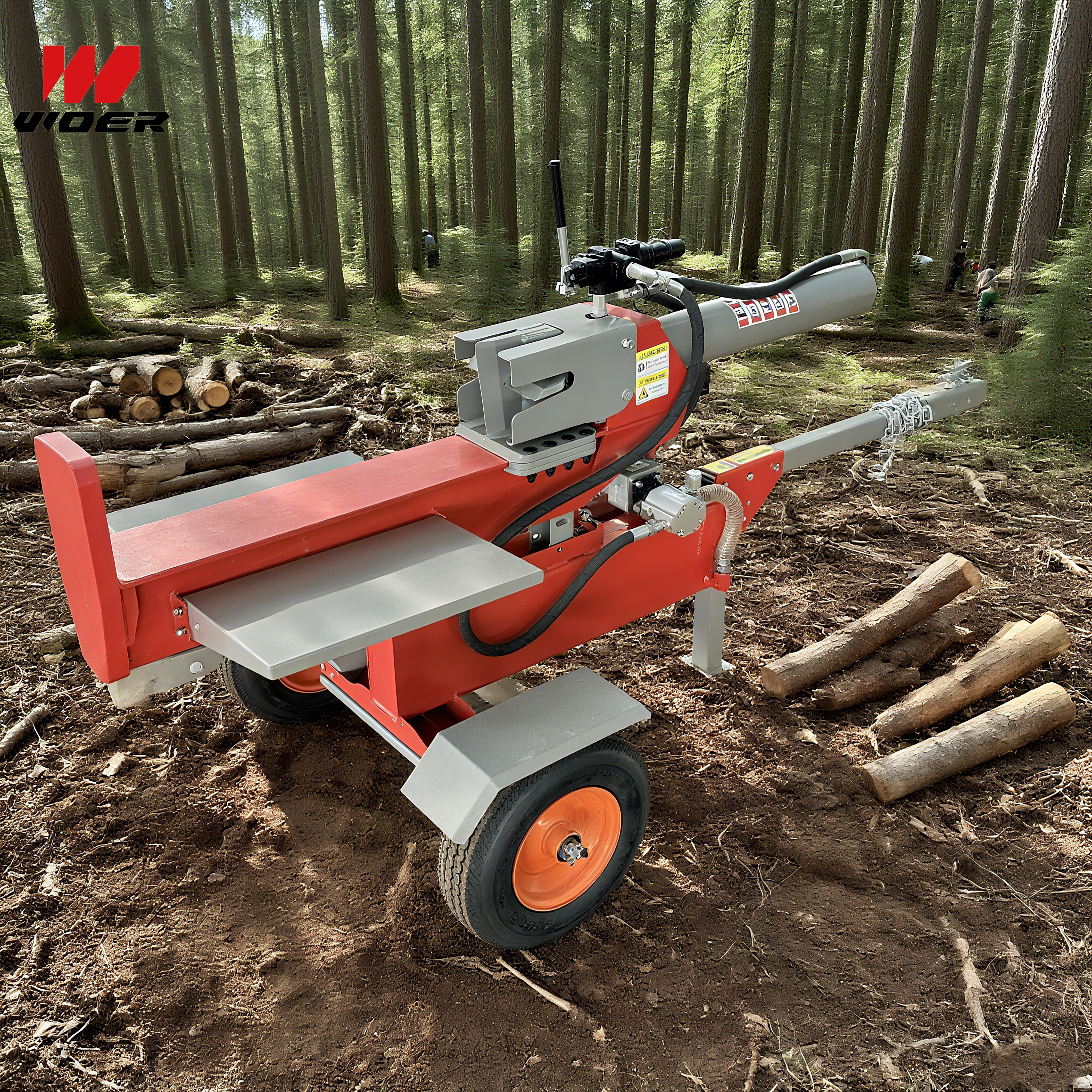Navigation
Contact us
Phone
Message

Effective maintenance of a log splitter — whether electric, hydraulic, kinetic or gasoline-powered — cuts operating costs, reduces downtime and extends service life. This guide focuses on practical maintenance steps, inspection schedules, safety standards and procurement tips tailored for operators, technical evaluators and decision-makers.
Why focused maintenance matters for your log splitter fleet
Operational teams and procurement staff routinely face pressure to deliver throughput with minimal cost. A well-maintained log splitter improves split efficiency for a wood log splitter, reduces repair-heavy failures for a hydraulic log splitter and prevents costly downtime for an electric log splitter. Investing in a documented maintenance program yields predictable costs, better safety compliance and demonstrable ROI at renewal or replacement time.
Key pain points addressed
- Unexpected downtime during peak season
- High repair costs from neglected hydraulic systems or electrical faults
- Safety incidents due to worn parts or incorrect use
- Difficulty comparing models when seeking log splitter for sale cheap
Routine inspection checklist (daily/weekly)
Operators should adopt a short, repeatable checklist to catch issues early. Use a simple log and picture evidence for traceability.
Hydraulic system care and troubleshooting
Hydraulic systems are central to hydraulic log splitter performance. Clean reservoirs, correct viscosity fluid and filtered intake prevent pump cavitation and spongy ram action. Follow OEM guidance for fluid type and change intervals; many commercial splitters benefit from a full fluid and filter change every 500 operating hours or annually, whichever comes first.
Common signs of hydraulic issues include slow cycle time, jerky motion, and overheating. Address leaks immediately and document repairs for warranty and audit trails. For industrial procurement, require suppliers to provide component part numbers, expected service intervals and access to certified technicians.
Electric motor and control maintenance
Electric log splitters reduce vibration and maintenance compared to gasoline models but require attention to electrical systems. Inspect motor brushes (where applicable), bearings, and thermal protection devices. Confirm supply voltage and phase balance to avoid motor stress. For variable-frequency drive (VFD) controlled machines, ensure fans and heat sinks are free of dust.
Kinetic and vertical log splitters: special considerations
Kinetic log splitter designs deliver fast cycles via flywheel energy storage. These units demand periodic belt inspections, flywheel balancing and safety interlock checks. Vertical log splitter maintenance focuses on feed and cradle integrity — pay attention to gate sensors and hydraulic lock valves.
Standards, safety and compliance
Adhere to applicable standards such as EN ISO machinery directives and national regulations. Where relevant, reference ASTM or JIS standards for safety guards, labeling and pressure equipment. Maintain an inspection log and operator training records to demonstrate compliance during audits and to reduce liability.
Operator training & PPE
Regular, documented training for operators reduces misuse. Emphasize safe log placement, avoiding splits with embedded metal, using PPE (gloves, eye protection, steel-toed boots) and lockout-tagout procedures for maintenance.
Cost and downtime analysis: what maintenance saves
Preventive maintenance reduces emergency repairs and unplanned downtime. A short example: replacing hydraulic seals and filter at scheduled intervals typically costs under 10% of the price of a major pump replacement and cuts related downtime by 70% or more. For electric log splitter fleets, proactive motor inspections help avoid bearing failures that can multiply replacement costs.
Purchasing guidance and lifecycle planning
When evaluating suppliers — especially when looking for a log splitter for sale cheap — compare total cost of ownership, not just purchase price. Consider spare parts availability, local service networks and standardization across your fleet. For some operations, a mix of electric log splitter units for indoor use and log splitter gasoline units for remote sites provides the best balance of cost and productivity.
Troubleshooting: quick fixes and when to call a technician
- Slow cycle: Check hydraulic fluid level, filter and pump condition.
- Motor won't start (electric log splitter): Confirm power supply, overload tripped, thermal cutouts and control wiring.
- Intermittent operation: Inspect safety interlocks, limit switches and sensor wiring.
- Unusual noises: Stop operation; inspect bearings, belts and flywheel balance on kinetic units.
FAQs for decision-makers and finance approvers
Q: How often should a commercial hydraulic log splitter receive a full service? A: Typically every 500 hours or annually; check the OEM manual and adjust for heavy-duty usage.
Q: Can electric splitters match gasoline throughput? A: Modern electric log splitters often match or exceed small gasoline units for consistent indoor tasks and provide lower maintenance and emissions.
Why choose us / Next steps
We combine field-tested maintenance protocols with clear documentation and technician support to maximize uptime and minimize lifecycle cost. Contact us for a tailored maintenance agreement, on-site audit or to discuss fleet standardization and procurement strategy. Our team will supply parts lists, estimated service intervals aligned with EN and ASTM recommendations, and case studies from similar operations to support your business case.
To schedule an assessment or request technical datasheets, reply to this message or use the product link above to download specifications and service plans.
Keywords used: electric log splitter, log splitter hydraulic, log splitter electric, kinetic log splitter, log splitter gasoline, hydraulic log splitter, vertical log splitter, wood log splitter, log splitter for sale cheap.

This stunning beach house property is a true oasis, nestled in a serene coastal community with direct access to the beach.
Contact
West Street, Melbourne Victoria 3000 Australia